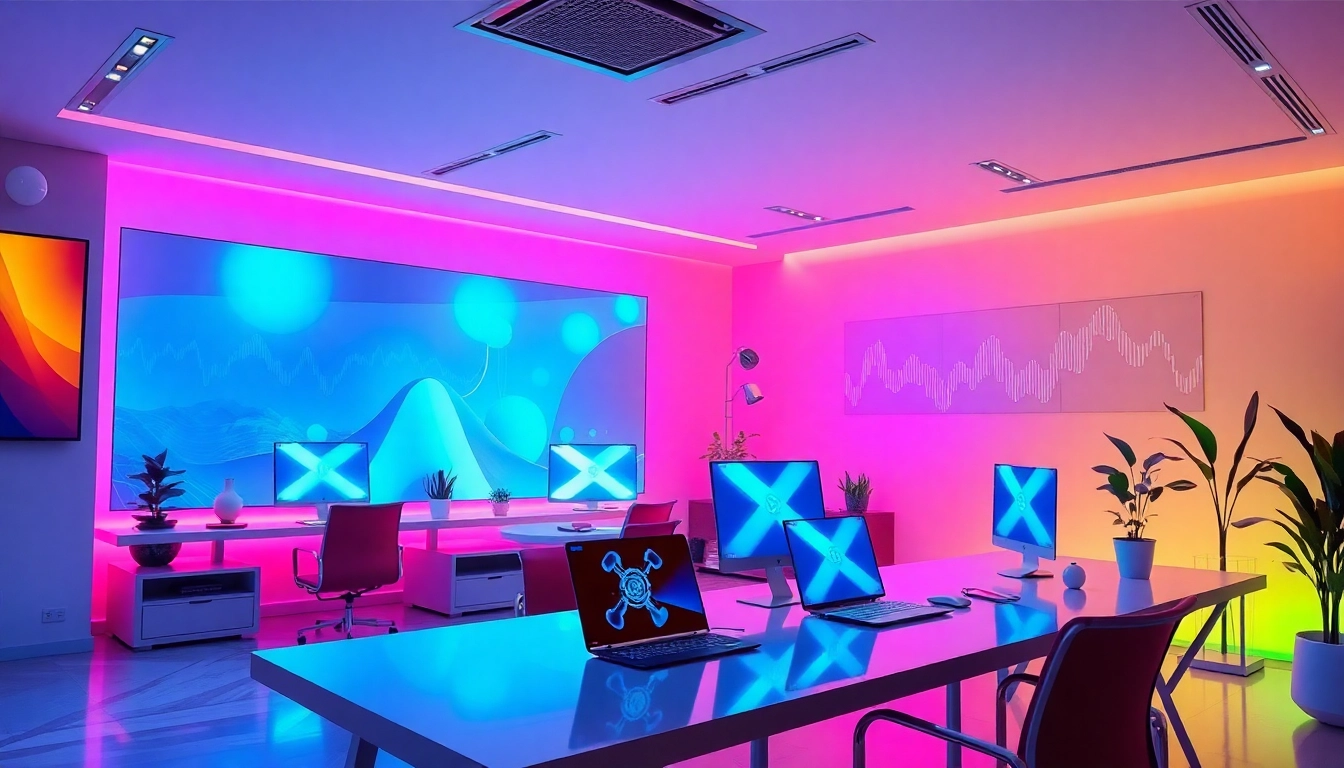Understanding Web Design and Its Importance
In today’s digital age, web design plays a crucial role in the development and maintenance of websites. The essence of web design transcends mere visual appeal; it encompasses a spectrum of skills and principles that contribute to the user experience and overall functionality of a website. By understanding the intricacies of web design, businesses can create engaging online presences that captivate users and drive conversions.
Definition and Scope of Web Design
Web design refers to the process of planning and creating web pages that make up a website. This involves not only the visual layout and aesthetic but also the functionality of the website, including text, images, videos, and interactive elements. The scope of web design has expanded significantly over the years, encompassing aspects like user interface (UI) design, user experience (UX) design, and responsive design. Each of these components plays a vital role in how users interact with a website, making it imperative for designers to consider a holistic approach in their design processes.
Components of Effective Web Design
Effective web design integrates several components that work together to provide an optimal user experience. These include:
- Visual Design: The aesthetic appeal of a website, including color schemes, typography, and imagery.
- Layout: The arrangement of elements on the page, which affects readability and navigation.
- Content: The information presented on the site, which should be relevant, informative, and engaging.
- Functionality: The performance of the website, ensuring that all features work seamlessly and fulfill their intended purpose.
- User Experience: The overall satisfaction of users as they navigate through the site.
Key Trends in Web Design
Staying ahead in the realm of web design requires an awareness of current trends. Some prominent trends include:
- Dark Mode: The growing popularity of dark-themed designs that reduce eye strain and enhance visual appeal.
- Minimalism: A focus on simplicity, eliminating unnecessary elements to emphasize core content and functionality.
- Microinteractions: Subtle animations and responses that improve user engagement and satisfaction.
- Voice User Interface (VUI): Integration of voice search capabilities to complement traditional navigation.
- Inclusive Design: Committing to accessibility and usability for all users, regardless of abilities.
Essential Elements of Web Design
Visual Aesthetics and Branding
Visual aesthetics are essential for establishing brand identity and creating memorable user experiences. A well-designed website aligns visual elements with branding guidelines, including logos, color palettes, and typography. Moreover, consistency across all pages reinforces brand recognition and fosters trust among visitors.
Navigation and Usability
Navigation should be intuitive, allowing users to find information effortlessly. Clear menus, breadcrumbs, and call-to-action buttons enhance usability. Designers must prioritize a seamless experience, ensuring that users can easily access content regardless of their web browsing device. Effective navigation also includes clear and concise labeling, which helps users know what to expect as they explore a site.
Responsive Design Mechanics
With the prevalence of mobile browsing, responsive design mechanics have become essential. These techniques ensure that a website adapts to various screen sizes and devices, providing an optimal viewing experience. Key strategies include flexible grid layouts, adaptable images, and media queries that adjust styling based on device characteristics.
Planning Your Web Design Project
Identifying Objectives and Target Audience
Before diving into design, clearly define the objectives of the website and identify the target audience. Understanding the demographic, preferences, and behaviors of potential users can guide design decisions and content strategies. This process can involve market research, user personas, and defining key performance indicators (KPIs) that align with business goals.
Choosing the Right Tools and Technologies
Selecting appropriate tools and technologies is crucial for effective web design. Depending on the complexity of the project, designers can choose from various content management systems (CMS), programming languages, and design software. Popular tools include HTML, CSS, JavaScript, and various frameworks that enhance functionality and design flexibility. The right combination of technologies can streamline the development process and improve website performance.
Building a Timetable and Workflow
Establishing a clear timetable and workflow fosters efficient project management. A well-structured workflow can include phases such as research, wireframing, design, development, testing, and deployment. Using project management software can help track progress, allocate resources, and maintain communication among team members, ensuring that deadlines are met and quality standards upheld.
Best Practices for Web Design
Ensuring Accessibility in Web Design
Accessibility is a fundamental aspect of web design that ensures all users can navigate and interact with a website, regardless of their abilities. Designers must incorporate features such as alternative text for images, keyboard navigation, and screen reader compatibility. Adhering to Web Content Accessibility Guidelines (WCAG) will not only improve user experience but also expand the reach of the website to a broader audience.
Optimizing for Search Engines
Search engine optimization (SEO) is integral to web design, improving a website’s visibility in search engine results. Effective SEO strategies include optimizing page titles and meta descriptions, using header tags appropriately, incorporating relevant keywords into content, and ensuring a fast loading speed. A well-structured website enhances usability and boosts search engine rankings.
Testing and Launching Your Website
Before launching, comprehensive testing is essential to identify and rectify any issues. Testing should cover functionality, compatibility across devices and browsers, and loading speed. User testing can also provide valuable feedback regarding user experience. Once testing is complete, a well-planned launch strategy will ensure a smooth transition from development to live status.
Measuring Success in Web Design
Using Analytics to Track Performance
To assess the effectiveness of web design, implementing analytics tools is crucial. Tools such as Google Analytics can provide insights into user behavior, traffic sources, and conversion rates. By tracking these metrics, designers and businesses can identify strengths and weaknesses in their web design, enabling data-driven decision-making.
Gathering User Feedback
User feedback is invaluable for continuous improvement. Techniques such as surveys, feedback forms, and user testing sessions can yield qualitative data on user satisfaction and areas for enhancement. Engaging users in the design process not only fosters loyalty but also provides practical insights that inform future updates and re-designs.
Continuous Improvement and Updates
The digital landscape is constantly evolving, making continuous improvement essential. Regular updates to content, design elements, and functionality keep a website relevant and engaging. Conducting periodic audits and staying informed about emerging trends will help ensure a website remains effective in meeting user needs and achieving business objectives.



